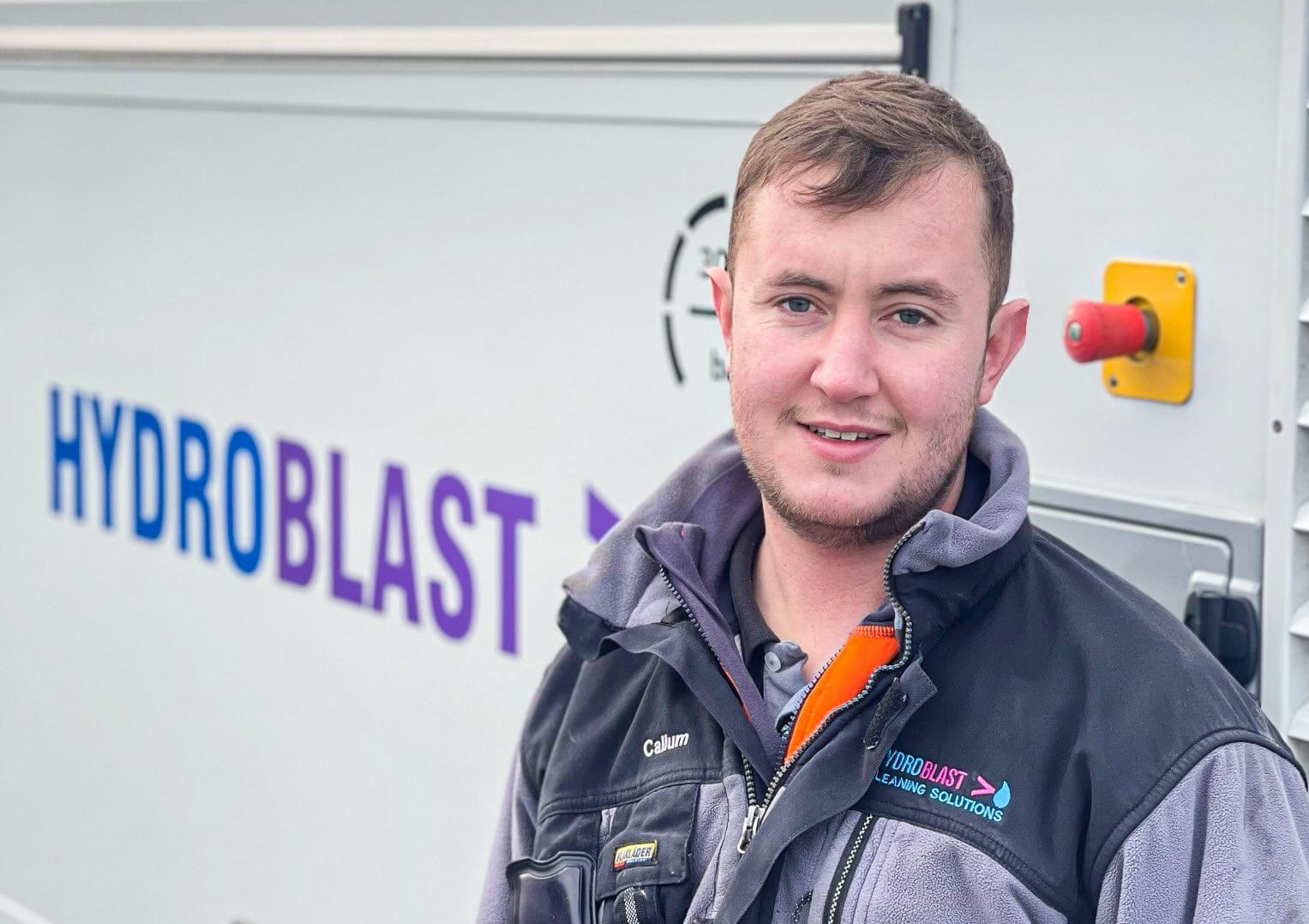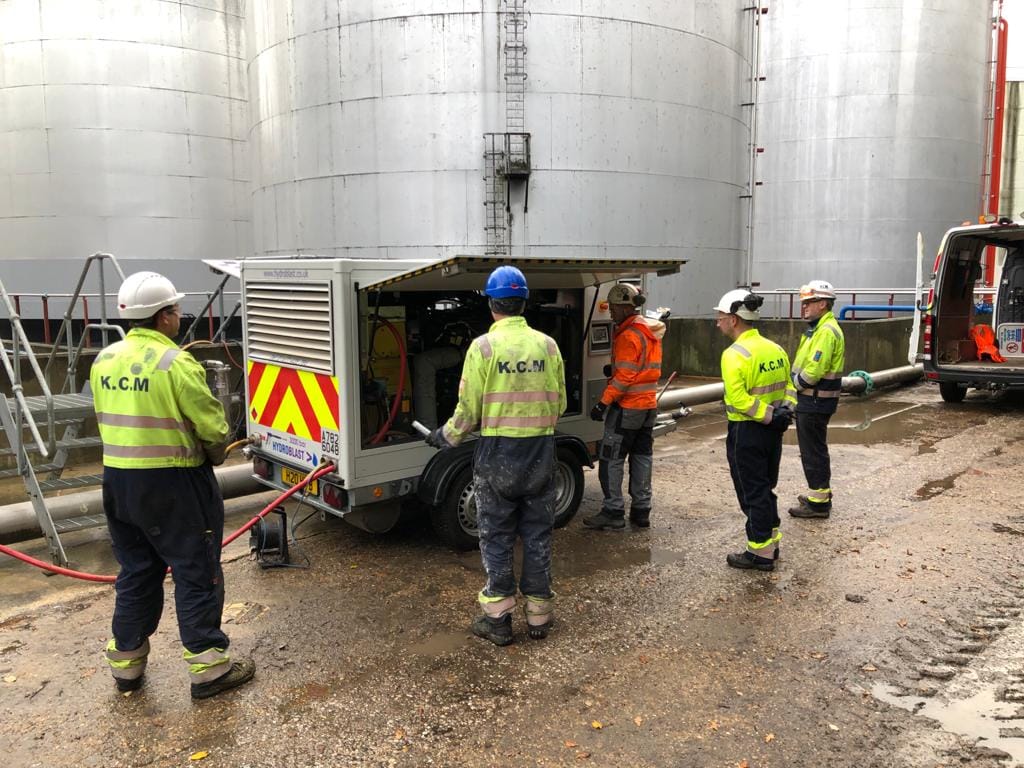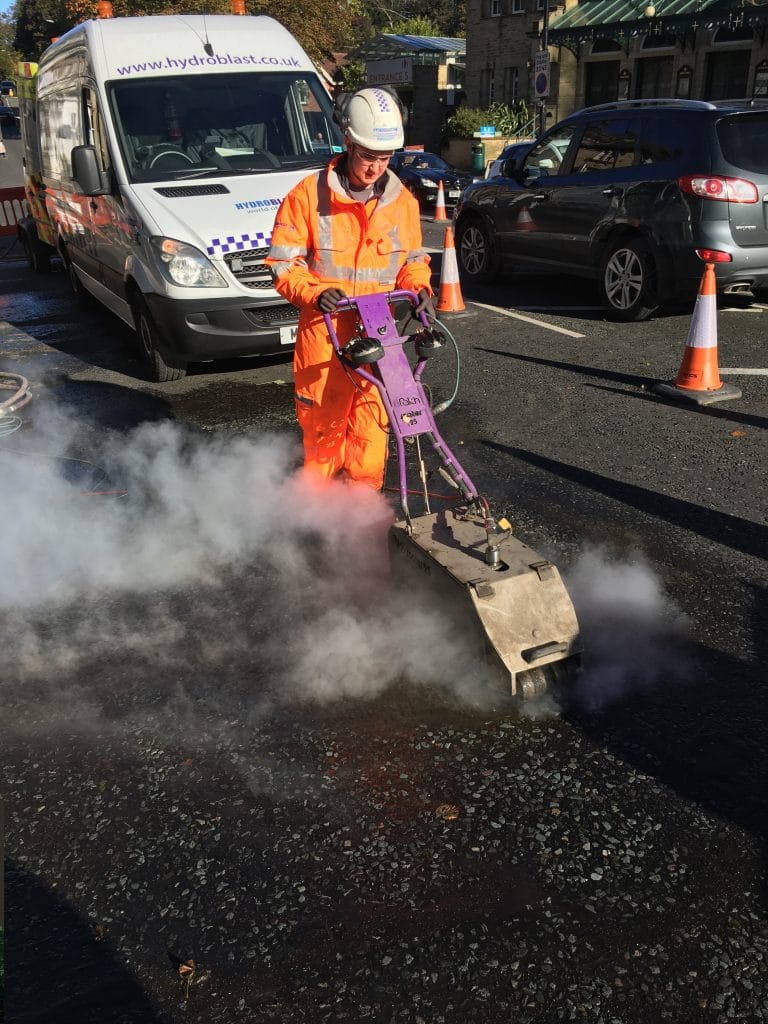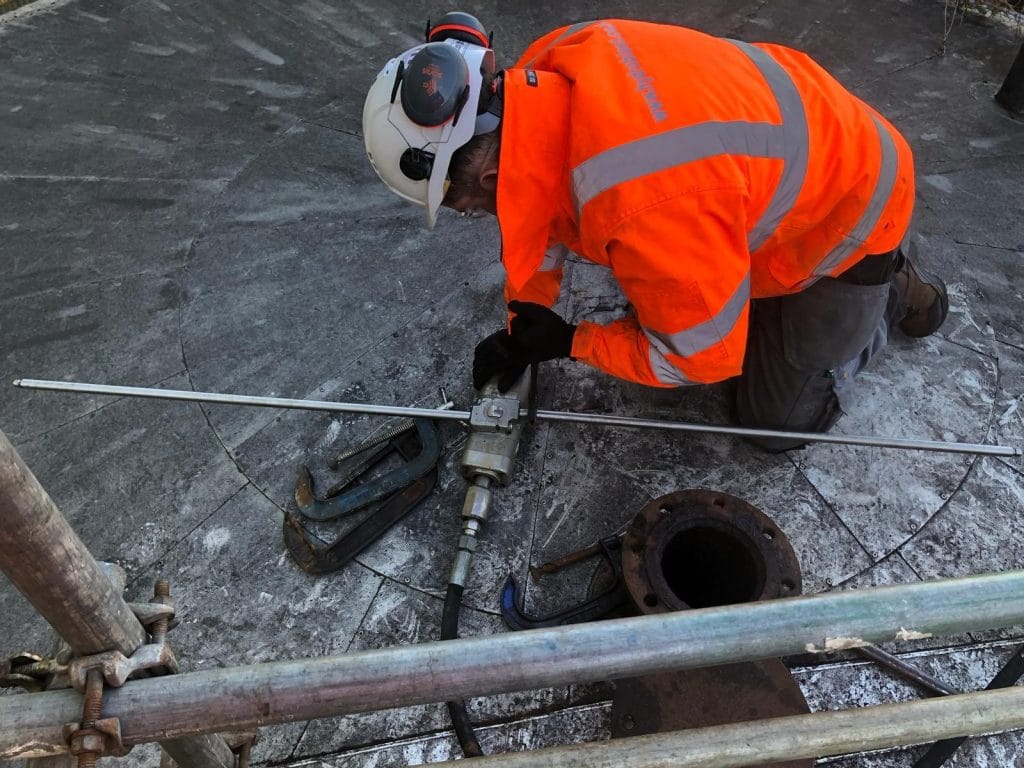Young Guns: Callum Moore

Responsibility comes with the job for Young Gun Callum Moore
Callum Moore didn’t have to wait long after he was promoted to site supervisor, aged 24, to be put to the test.
His first job in charge of a team of operatives at water jetting contractor Hydroblast was a night shift removing refractory at a waste to energy plant in Sheffield, South Yorkshire.
The electrical power source for their water jetting robot was playing up, preventing the team from getting the machine started.
Everyone knew time was of the essence. The hydrodemolition task had to be completed in a short shutdown. As time ticked away, Callum made the decision – switch to removing the refractory with hand lances.
It wasn’t as quick as robotic hydrodemolition. But they made progress. And when the day shift started, client electricians were on hand to fix the power problem, allowing the robot to be used again.
It had been the right call. Callum says: “I hadn’t been sure I was ready to be a supervisor. But the operations director, Ross McDonald, said I’d get all the support I needed.
“The rest of the team were very helpful. I was supervising older and more experienced water jetters. They shared their advice, which made it easier for me, and that’s still the same.”

Appreciating the power of water
Callum, now 26, is the Water Jetting Association’s latest Young Gun – someone under the age of 30 carving out a career in the water jetting industry and making a difference for clients and colleagues.
When he left school, aged 16, he began a joinery apprenticeship. Aged 18, he became a miner in a potash works on the North Yorkshire coast.
When he was made redundant, aged 20, through a family friend, he got some shifts working for a water jetting contractor on a job in Grangemouth, Scotland.
As a result, he obtained his WJA training and registration, which led to him applying, a few months later, for a permanent job as a water jetting operative at Hydroblast, based in Northallerton, North Yorkshire.
“I’d never heard of water jetting and didn’t know what to expect,” explains Callum. “When I first got on the gun, I couldn’t believe how powerful it was. It was amazing to see it could cut through concrete.
“At Hydroblast, new recruits are brought on slowly. You get a lot of supervision and practice. The first time I jetted, I was tired in 10 minutes because of the way I was holding the gun.
“Then I learned to hold it tight to the body and lean into the force of the jet. It’s about using your weight to control the jet. Balance is just as important as strength, then you can do your best work.”
Callum appreciated the diversity of services Hydroblast delivers, including tank cleaning, surface preparation and concrete removal, with a strong emphasis on using robotic water jetting systems to support safety and productivity. It is a mix that keep Callum and his colleagues on their toes.

For one project, he was part of a team that travelled to Sardinia, Italy, to remove refractory from the combustion chamber of an energy-from-waste (EfW) plant.
They used Hydroblast’s robotic water jetting machines, operating at 1400 bar (20,300 psi) with a flow rate of 78 liters per minute.
Thriving in a high performance role
Working in small teams delivering a specialist service, often under time pressure, for clients who rely on Hydroblast to solve challenging problems to rigorous specifications, rubs off on a person’s character.
“You do have to focus with this job,” says Callum. “It’s probably made me more responsible. The water jets are dangerous if you don’t control them. And with hydrodemolition, you have hundreds of shards of concrete flying about as well.”
Hydroblast also uses cutting-edge technology equipment. There is a lot to learn about how to set it up, use it, and maintain it. On top of this, Hydroblast operatives undergo a lot of worksite technical and safety training to support their roles.
Faced with these challenges, Callum has thrived. Soaking up the experience and learning new skills. In 2019, he was promoted to become an operations supervisor.
Now, he was not just responsible for doing a good job. He was expected to support and lead Hydroblast teams. And he soon found out he could do that job as well.
So, would Callum recommend a career in water jetting to others? “I definitely, would, yes,” he says. “It’s not something I thought of, at first. But I’m glad I’m now doing it. It’s giving me a good career.
“Every day has different challenges. You’re learning new things all the time. My mates find it interesting as well. They’re as surprised as I was that water can cut concrete when I show them videos of our work.”

